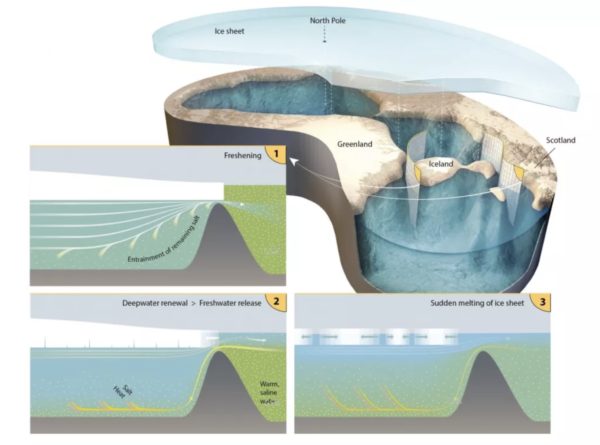
The Arctic Ocean was once a pool of fresh water capped with an ice shelf half as thick as the Grand Canyon is deep.
If that’s hard to envision, don’t despair. Scientists were surprised at the discovery, published Wednesday (Feb. 3) in the journal Nature, as well. The trick to envisioning this odd arrangement is to think about the relationship between ice sheets and the ocean. When ice sheets melt, they dump water into the ocean, raising the sea level. But when ice sheets grow, as they have during Earth’s glacial periods, sea level drops.
Now, new research shows that in these eras of lower sea level, the Arctic Ocean’s connection to the Pacific and Atlantic was very limited, with Greenland, Iceland, and northern Europe and Siberia acting as the rim of a bowl containing the Arctic. (Ice itself could have further restricted circulation.) Land and sea alike were overlain with an ice sheet 2,952 feet (900 meters) thick.


